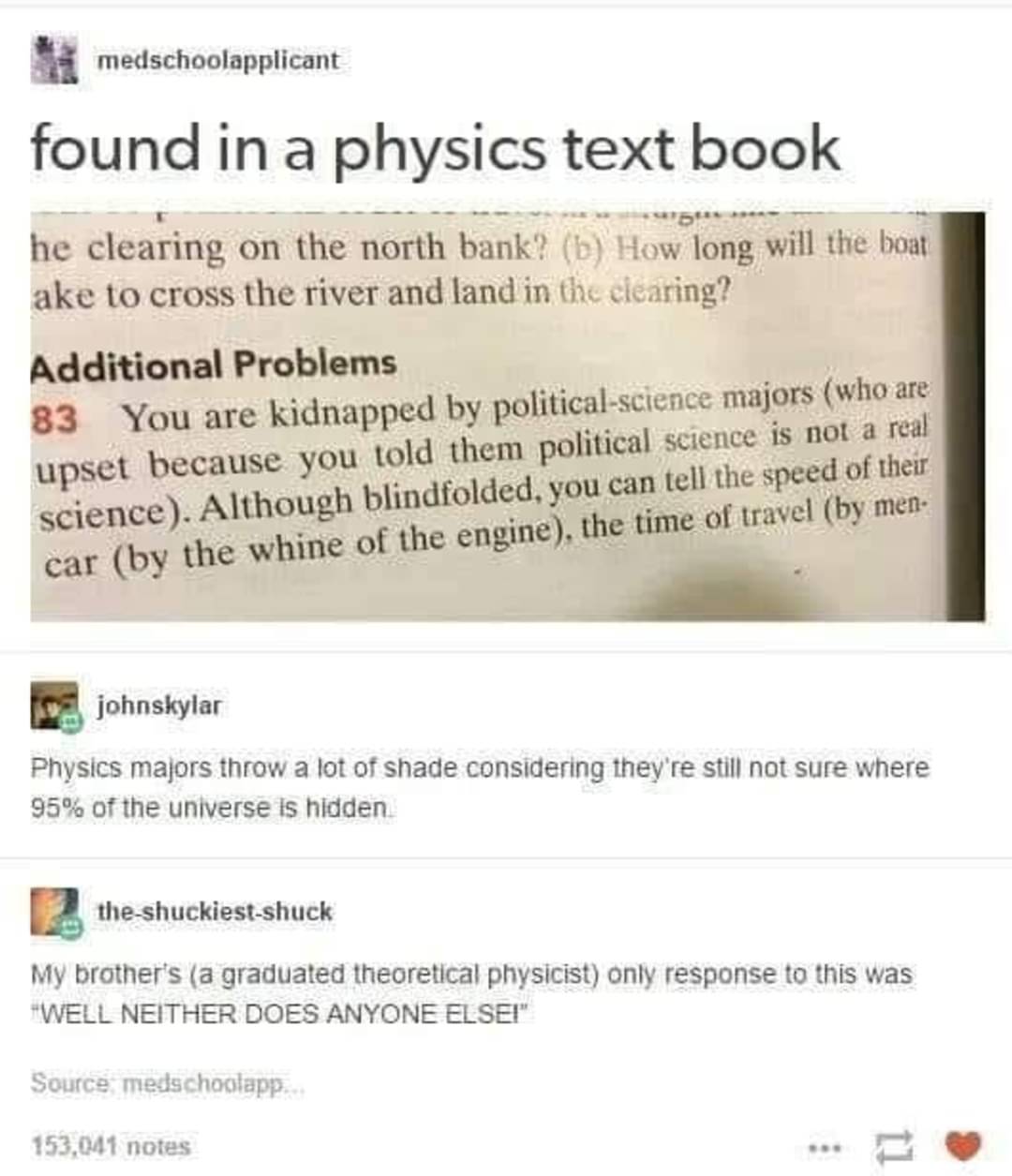this post was submitted on 21 May 2024
1060 points (99.3% liked)
Science Memes
11552 readers
1565 users here now
Welcome to c/science_memes @ Mander.xyz!
A place for majestic STEMLORD peacocking, as well as memes about the realities of working in a lab.

Rules
- Don't throw mud. Behave like an intellectual and remember the human.
- Keep it rooted (on topic).
- No spam.
- Infographics welcome, get schooled.
This is a science community. We use the Dawkins definition of meme.
Research Committee
Other Mander Communities
Science and Research
Biology and Life Sciences
- [email protected]
- [email protected]
- [email protected]
- [email protected]
- [email protected]
- [email protected]
- [email protected]
- [email protected]
- [email protected]
- [email protected]
- [email protected]
- [email protected]
- [email protected]
- [email protected]
- [email protected]
- [email protected]
- [email protected]
- [email protected]
- [email protected]
- [email protected]
- [email protected]
- [email protected]
- [email protected]
- [email protected]
- !reptiles and [email protected]
Physical Sciences
- [email protected]
- [email protected]
- [email protected]
- [email protected]
- [email protected]
- [email protected]
- [email protected]
- [email protected]
- [email protected]
Humanities and Social Sciences
Practical and Applied Sciences
- !exercise-and [email protected]
- [email protected]
- !self [email protected]
- [email protected]
- [email protected]
- [email protected]
Memes
Miscellaneous
founded 2 years ago
MODERATORS
you are viewing a single comment's thread
view the rest of the comments
view the rest of the comments

I think that should be all of them, but if you want to check, there are references on the website where we keep all the numbers detailing how to check any number, or to list all of them if you want an arbitrarily large pile or have infinite time on your hands. :)
Doesn't that miss out n=1?
1 being prime breaks a lot of the useful properties of primes, such as the uniqueness of prime factorization.
Isn't that function listing all the numbers? Not only the primes?
I don't know if prime factorization is the correct English word for it but the operation I am referring to takes a (non zero) natural number and returns a multiset of primes that give you the original number when multiplied together. Example:
pf(12)={2,2,3}if we allowed 1 to be a prime then prime factorization cease to be a function aspf(12)={1,2,2,3}andpf(12)={1,1,1,1,2,2,3}become valid solutions.You are correct. The person you're replying to misread my set as a fancy way of saying "all natural numbers", not "all primes".
So you're both right, in that if 1 were a prime, the primes would not work right, and if 1 were not a natural number then those would not work right.
Using the totient function to define the set of primes is admittedly basically just using it for the fancy symbol I'll admit, and the better name for where we keep all the primes is the blackboard bold P. 😊
Oh, no that's just the primes. I was responding to a person joking about how we don't even know all the primes, so I used a technical yet unhelpful definition of "the set of all primes" to be technically correct,xas is the mathematics way. :)